An object of mass 4 kg is attached to a spring having spring constant 100Nm. It performs simple harmonic motion on a smooth horizontal surface with an amplitude of 2 m. A 6 kg object is dropped vertically onto the 4 kg object when it crosses the mean position, and sticks to it. the change in amplitude of oscillation due to collision is
1m
zero
2[1−√25]
2[1−1√5]
The correct Answer is:C
To solve the problem, we need to find the change in amplitude of the oscillation after a 6 kg object is dropped onto a 4 kg object that is attached to a spring and is performing simple harmonic motion.
1. Identify Initial Parameters:
- Mass of the first object (m1) = 4 kg
- Spring constant (k) = 100 N/m
- Amplitude (A) = 2 m
2. Calculate Initial Velocity (v0) at Mean Position:
- At the mean position, the velocity is maximum. The total mechanical energy in simple harmonic motion is given by:
E=12kA2
- Substitute the values:
E=12×100×(2)2=12×100×4=200 J
- The kinetic energy at the mean position is equal to the total energy:
12m1v20=200
- Rearranging gives:
v20=4004=100⟹v0=10 m/s
3. Apply Conservation of Momentum:
- When the 6 kg object is dropped onto the 4 kg object, momentum is conserved.
- Initial momentum before collision:
pinitial=m1v0=4×10=40 kg m/s
- Let the final velocity after the collision be v′:
pfinal=(m1+m2)v′=(4+6)v′=10v′
- Setting initial momentum equal to final momentum:
40=10v′⟹v′=4 m/s
4. Calculate New Amplitude (A'):
- The total mechanical energy after the collision is given by:
E′=12(m1+m2)(v′)2=12×10×(4)2=12×10×16=80 J
- The new amplitude A′ can be found using the energy conservation equation:
E′=12k(A′)2
- Substitute the values:
80=12×100×(A′)2
- Rearranging gives:
80=50(A′)2⟹(A′)2=8050=85⟹A′=√85=2√2√5 m
5. Calculate Change in Amplitude:
- The change in amplitude ΔA is:
ΔA=A′−A=2√2√5−2
Final Result:
The change in amplitude of oscillation due to the collision is:
ΔA=2√2√5−2
- Mass of the first object (m1) = 4 kg
- Spring constant (k) = 100 N/m
- Amplitude (A) = 2 m
- At the mean position, the velocity is maximum. The total mechanical energy in simple harmonic motion is given by:
E=12kA2
- Substitute the values:
E=12×100×(2)2=12×100×4=200 J
- The kinetic energy at the mean position is equal to the total energy:
12m1v20=200
- Rearranging gives:
v20=4004=100⟹v0=10 m/s
- When the 6 kg object is dropped onto the 4 kg object, momentum is conserved.
- Initial momentum before collision:
pinitial=m1v0=4×10=40 kg m/s
- Let the final velocity after the collision be v′:
pfinal=(m1+m2)v′=(4+6)v′=10v′
- Setting initial momentum equal to final momentum:
40=10v′⟹v′=4 m/s
- The total mechanical energy after the collision is given by:
E′=12(m1+m2)(v′)2=12×10×(4)2=12×10×16=80 J
- The new amplitude A′ can be found using the energy conservation equation:
E′=12k(A′)2
- Substitute the values:
80=12×100×(A′)2
- Rearranging gives:
80=50(A′)2⟹(A′)2=8050=85⟹A′=√85=2√2√5 m
- The change in amplitude ΔA is:
ΔA=A′−A=2√2√5−2
The change in amplitude of oscillation due to the collision is:
ΔA=2√2√5−2
Topper's Solved these Questions
- LINEAR AND ANGULAR SIMPLE HARMONIC MOTIONBOOK - CENGAGE PHYSICS ENGLISHCHAPTER - LINEAR AND ANGULAR SIMPLE HARMONIC MOTIONEXERCISE - Multiple Correct
35 Videos
- LINEAR AND ANGULAR SIMPLE HARMONIC MOTIONBOOK - CENGAGE PHYSICS ENGLISHCHAPTER - LINEAR AND ANGULAR SIMPLE HARMONIC MOTIONEXERCISE - Assertion Reasoning
6 Videos
- LINEAR AND ANGULAR SIMPLE HARMONIC MOTIONBOOK - CENGAGE PHYSICS ENGLISHCHAPTER - LINEAR AND ANGULAR SIMPLE HARMONIC MOTIONEXERCISE - Subjective
21 Videos
- KINETIC THEORY OF GASES AND FIRST LAW OF THERMODYNAMICSBOOK - CENGAGE PHYSICS ENGLISHCHAPTER - KINETIC THEORY OF GASES AND FIRST LAW OF THERMODYNAMICSEXERCISE - Interger
11 Videos
- MISCELLANEOUS KINEMATICSBOOK - CENGAGE PHYSICS ENGLISHCHAPTER - MISCELLANEOUS KINEMATICSEXERCISE - Interger type
3 Videos
Similar Questions
A particle of mass 3 kg , attached to a spring with force constant 48Nm−1execute simple harmonic motion on a frictionless horizontal surface. The time period of oscillation of the particle, is seconds , is
View Solutiona block of mass 0.1 kg attached to a spring of spring constant400Nm pulled horizontally from x=0 tox1=10mm. Find the work done by the spring force
View Solution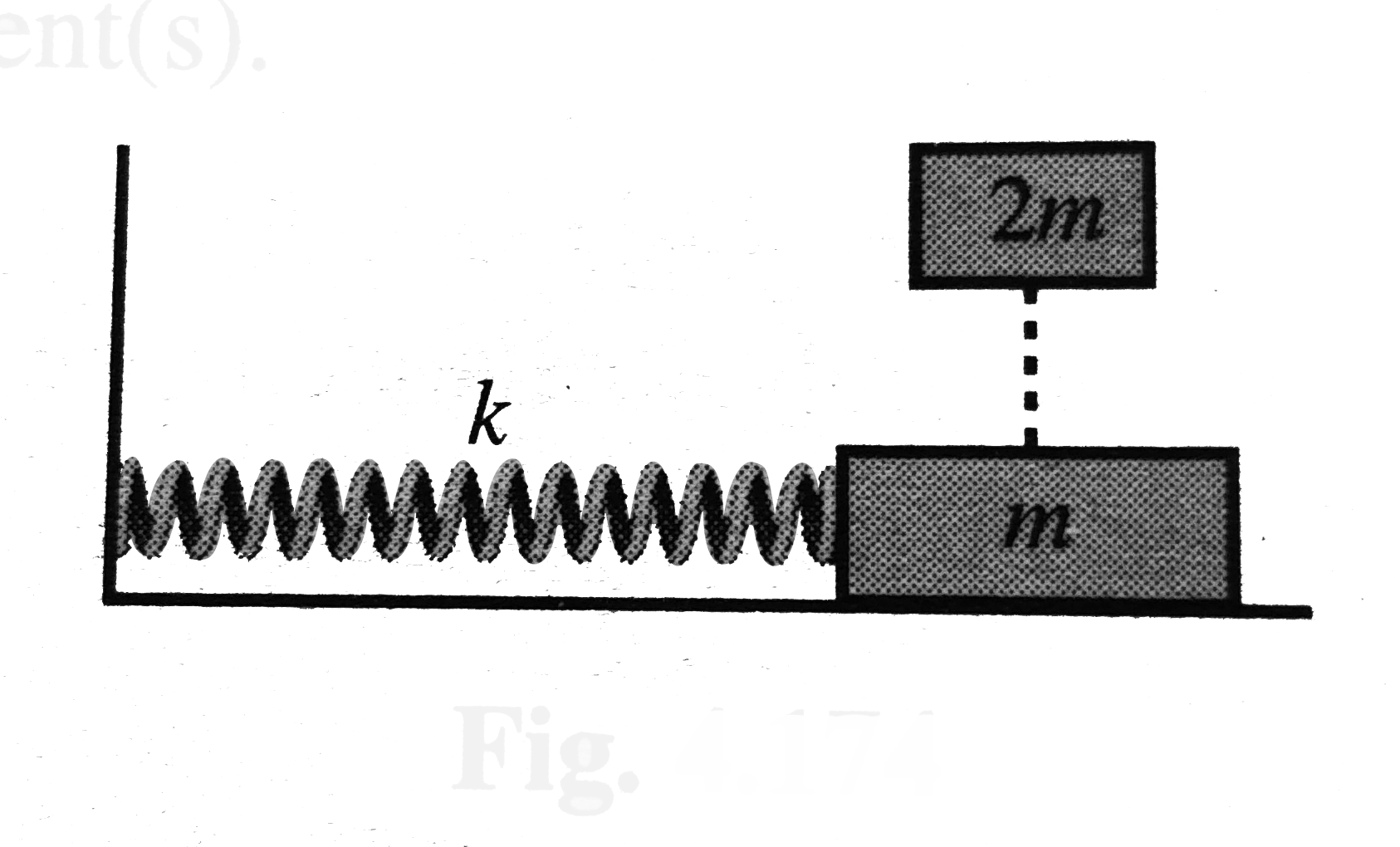
An object of mass m is performing simple harmonic motion on a smooth horizontal surface as shown in Fig. just as the oscillating object reaches its extreme position, another object of mass 2 m is dropped on to oscillating object, which sticks to it. For this situation mark out the correct statement (s).
View SolutionAn object of mass M and radius R is performing pure rolling motion on a smooth horizontal surface under the action of a constant force F as shown in Fig. The object may be
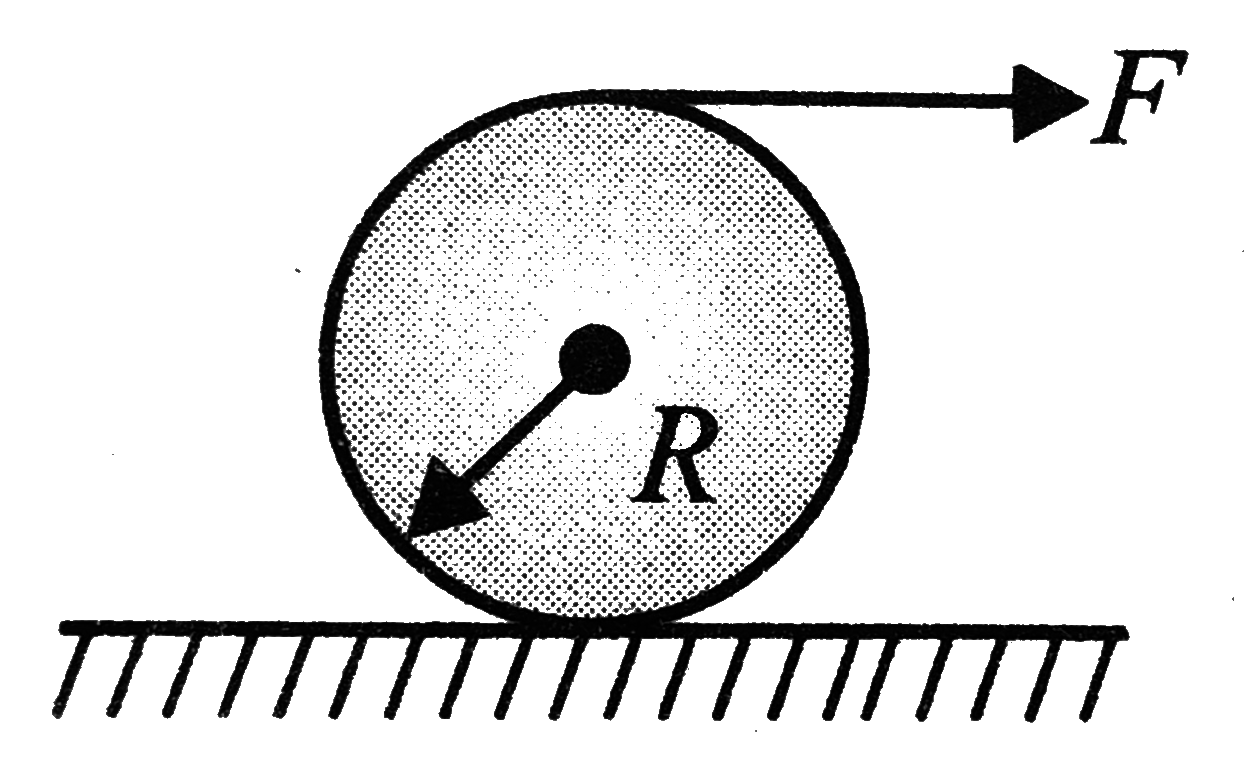
View SolutionA block with mass M attached to a horizontal spring with force constant k is moving with simple harmonic motion having amplitude A1. At the instant when the block passes through its equilibrium position a lump of putty with mass m is dropped vertically on the block from a very small height and sticks to it.
(a) Find the new amplitude and period.
(b) Repeat part (a) for the case in which the putty is dropped on the block when it is at one end of its path.
View SolutionA block with mass M attached to a horizontal spring with force constant k is moving with simple harmonic motion having amplitude A1. At the instant when the block passes through its equilibrium position a lump of putty with mass m is dropped vertically on the block from a very small height and sticks to it.
(a) Find the new amplitude and period.
(b) Repeat part (a) for the case in which the putty is dropped on the block when it is at one end of its path.
View SolutionTwo blocks of masses 6 kg and 3 kg are attached to the two ends of a massless spring of spring constant 2π2N/m. If spring is compressed and released on a smooth horizontal surface then find the time period (in seconds) of each block.
View SolutionA mass M is attached to a horizontal spring of force constant k fixed one side to a rigid support as shown in figure. The mass oscillates on a frictionless surface with time period T and amplitude A. When the mass M is in equilibrium position, another mass m is gently placed on it. When will be the new amplitude of ocillation?
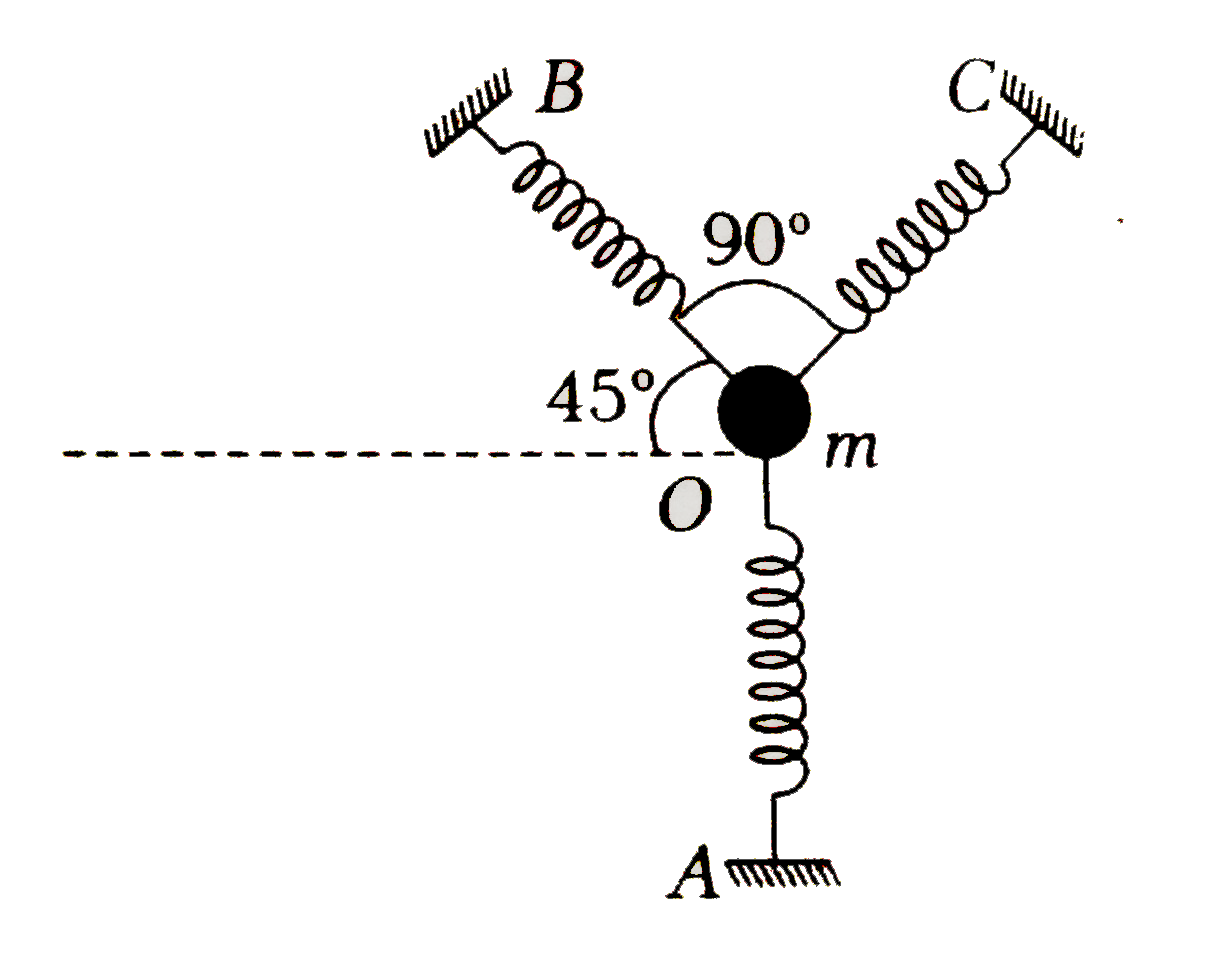
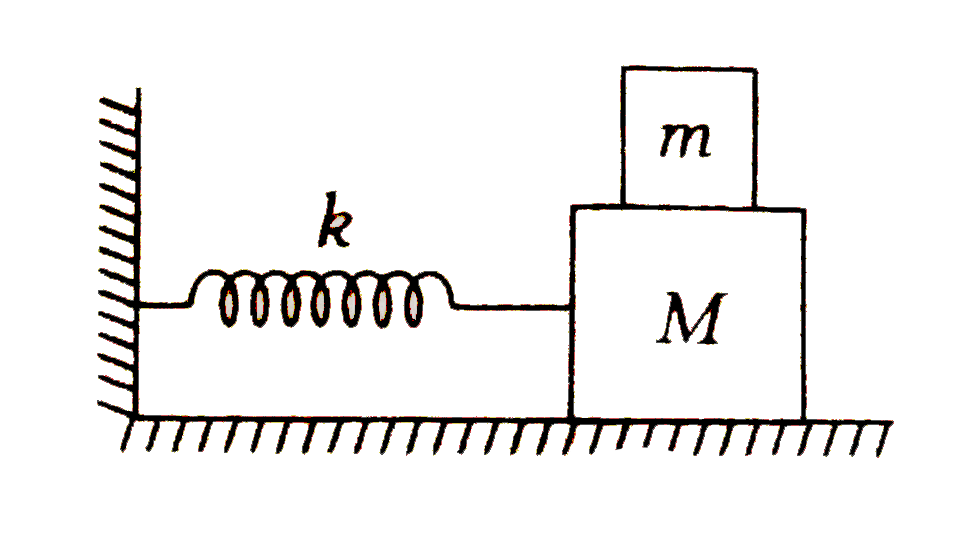
View SolutionPassage III A block of mass m =1/2 kg is attached with two springs each of force contant k=10N/m as shown. The block is oscillating vertically up and down with amplitude A=25cm. When the block is at its mean position one of the spring breaks without changing momentum of block.
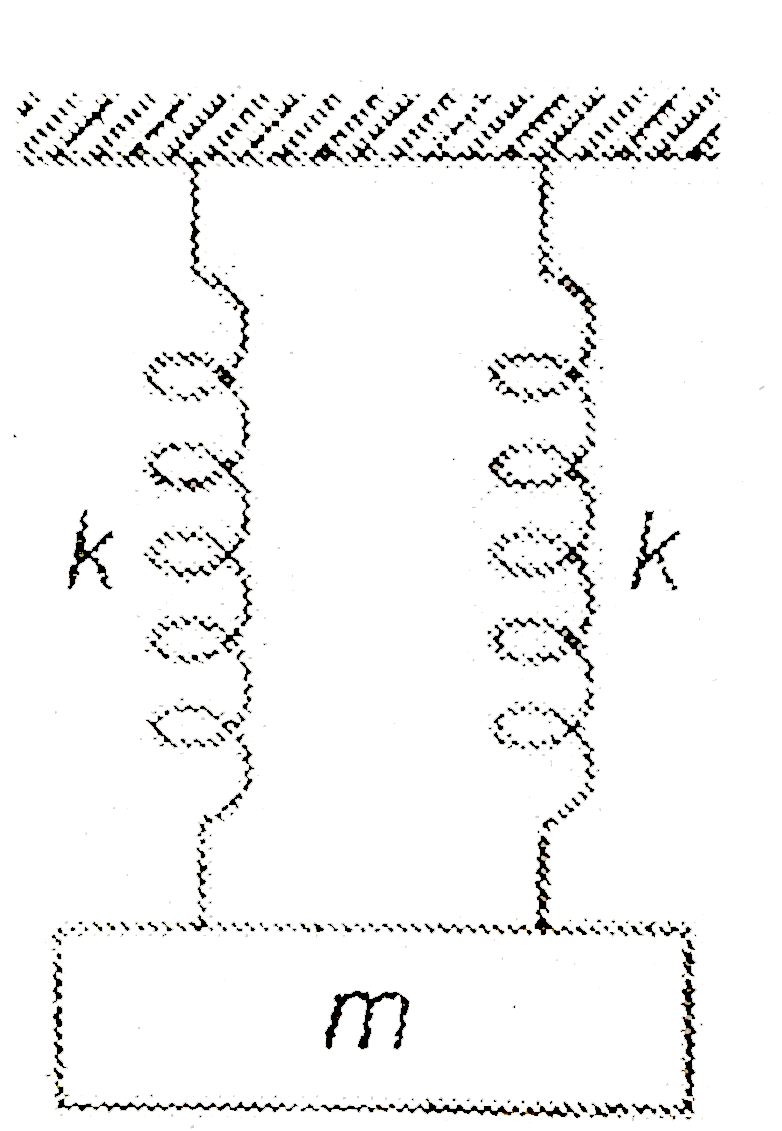
What is the new amplitude of osciallation of the block.
View SolutionA 2kg mass is attached to a spring of force constant 600N/m and rests on a smooth horizontal surface. A second mass of 1kg slides along the surface toward the first at 6m/s.
(a) Find the amplitude of oscillation if the masses make a perfectly inelastic collision and remain together on the spring. what is the period of oscillation ?
(b) Find the amplitude and period of oscillation if the collision is perfectly elastic.
( c) For each case , write down the position x as a function of time t for the mass attached to the spring, assuming that the collision occurs at time t=0. What is the impulse given to the 2kg mass in each case ?
View Solution
